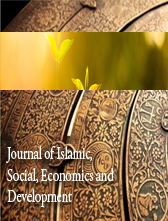VISUAL CUES CONFUSION ON 0.0% ALCOHOL BEVERAGES IN MALAYSIA: UNINTENTIONAL OR DELIBERATE MARKETING STRATEGY?
Abstract
Malaysia is a multicultural country, and despite Muslims being the majority, there are a lot of non-Halal products sold in the market to cater to consumers from various backgrounds. Although most food and beverage products in the Malaysian market have clear Halal status, unfortunately, some of the food and beverage products caused a lot of confusion to Muslim consumers. Products such as 0.0% alcohol beverages, for instance, can cause a lot of mess to consumers as the products claim to be without alcohol, and the packaging design is similar to the existing Halal products in the market. This research examines Muslim consumers' purchase intention toward 0.0% alcohol beverages. Thus, this study employed the survey using quantitative and visual cues. This survey uses the visual representation of the actual product to elicit actual responses towards 0.0% alcohol beverage products. Data was collected in this study using a purposive sampling method where online questionnaires were distributed to Generation Z Muslim consumers in Penang Island, and 215 respondents participated. Data was analyzed using descriptive statistics, and the results show that Muslim consumers are perplexed by conflicting information portrayed on the packaging of 0.0% alcohol beverages, which indicates that these products are viewed as Halal by almost half of the respondents in this study. Such findings indicate the gravity of this situation, as access to these beverages is relatively easy through online and offline stores.













